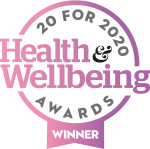While you are on your kefir journey, (and for your lifetime health in general, forevermore!) we recommend the following dietary adjustments:
Keep close track of your progress, marking each symptom 1 to 10 daily. You can use the downloadable health journal here if you like.
Consume kefir daily
Start slowly, with 1 TBSP per day for a week, then 2 TBSP every day for a week, etc. Work your way up gradually until you’re up to the full daily amount of 170 ml. If this amount of kefir is too much, or if any flaring or worsening of the condition occurs at any time (even six months or a year into the process!), you may be experiencing a late stage detox. If this happens, immediately cut back to 1 TBSP per day until things settle down, and then gradually increase again. Remember, you have your hands on the controls! Kefir remains beneficial as a lifetime health booster, to push back against the constant assaults being made on your microbiome by sugar, stress, environmental toxins and antibiotics in the ground water and in the food chain. A review of the scientific literature on kefir can be found here.
Avoid consuming refined sugar
Refined sugar kills off the good bugs inside your gut, and feeds the bad ones. Use 100% pure stevia, or yacon syrup, instead.
Avoid cow dairy
Most cow dairy contains the A1 casein, which is inflammatory for the gut. Try switching to goat cheese, butter, milk and yogurt. You may also try unsweetened oat, almond or rice milk.
Fermented soy only
You may find soy on your list as one of your personalised dietary recommendations. We recommend that you consume fermented soy products only (like natto, tempeh, miso, and fermented soy sauce), as unfermented soy products (including soy milk) may impair thyroid function. More information on soy can be found here. www.huffpost.com/entry/soy-health_n_1822466
Do you have IBS?
If you are dealing with IBS symptoms, we recommend avoiding gluten until your symptoms resolve. Gluten is found in wheat products including whole wheat, wheat bran, as well as other grain products like barley and rye. Once your gut has recovered, these products will ultimately be good for your microbiome, as they contain insoluble fibre for your gut bugs to ferment. But they may exacerbate your IBS symptoms, so wait until your IBS has resolved, before adding gluten back into your diet. Try small amounts, and see how you react. If you experience any pain or discomfort, continue to avoid gluten for a period of time and then try again. Over time, kefir will improve your ability to handle gluten. Grains like oatmeal, quinoa, amaranth, millet and buckwheat do not contain gluten. These may be a good choice for you in the meantime, as it’s important to continue to eat whole grains during your IBS recovery, for the dietary fibre they provide.
You may also wish to avoid the nightshade family in the early stages of your journey: tomatoes, potatoes, peppers and eggplants. You may also wish to avoid onions, garlic, cashews and peanuts until your symptoms resolve. These items are all high in lectins, which are gut irritants. A healthy gut can easily cope with these lectins, and once you have recovered, they will aid your gut health if they are on your personalised recommendation list. Once your symptoms have resolved and you are feeling comfortable again, try adding these lectin-high items back into your diet, one at a time, in small amounts. Kefir will improve your gut health over time, so if you react to a trial, try drinking the kefir for another few months and then try again.
Low GI foods
Try to eat low GI foods that score 55 or lower on the Glycemic Index. These foods tend to burn slowly inside your system, releasing glucose gradually over time. This is better for your gut than eating processed food, which burns up quickly like newspaper in a fireplace, and can destabilise your gut microbiome with the following rush of insulin. For example, if you’re eating rice, choose basmati rice which has a low GI score of 52, as compared with white rice, which scores a high 79. You can look up the GI ratings of different foods here.
Good low-GI snack options include seaweed thins, zero noodles, coconut chips, nuts. Fruit is a good snack options, but don’t consume a huge bowl at one sitting, as fruit is high in natural fructose. Mix it with some nuts or protein.
Good fats
Concentrate on adding good fats into your diet. Good choices are 1 TBSP daily of MCT oil, 1 TBSP daily of virgin cold pressed flaxseed oil, one avocado daily, walnuts, salmon, goat butter.
Add a rainbow to your plate!
Try to work through all the colours of the rainbow in fruits and vegetables every day, and rotate your colours – if you have beetroot for your red choice one day, try raspberries the next. Your gut bugs are very biodiverse, and they each thrive on different phytonutrients, so it’s important to consume a variety of foods to feed them. Try to avoid getting stuck in a diet rut!
Ultimately your goal should be to increase the health and biodiversity of bacterial strains inside your gut until you can tolerate – and are eating – 50 different foods a week. Like the planetary ecosystems around us, a healthy microbiome is a biodiverse microbiome. You want lots of different strains of gut bugs in there, and you need to eat lots of different kinds of food to feed them all.
Remember that our team of certified Nutritional Therapists are always here to help you along your journey. Feel free to ring us 01239 654 072 with any questions you may have.













